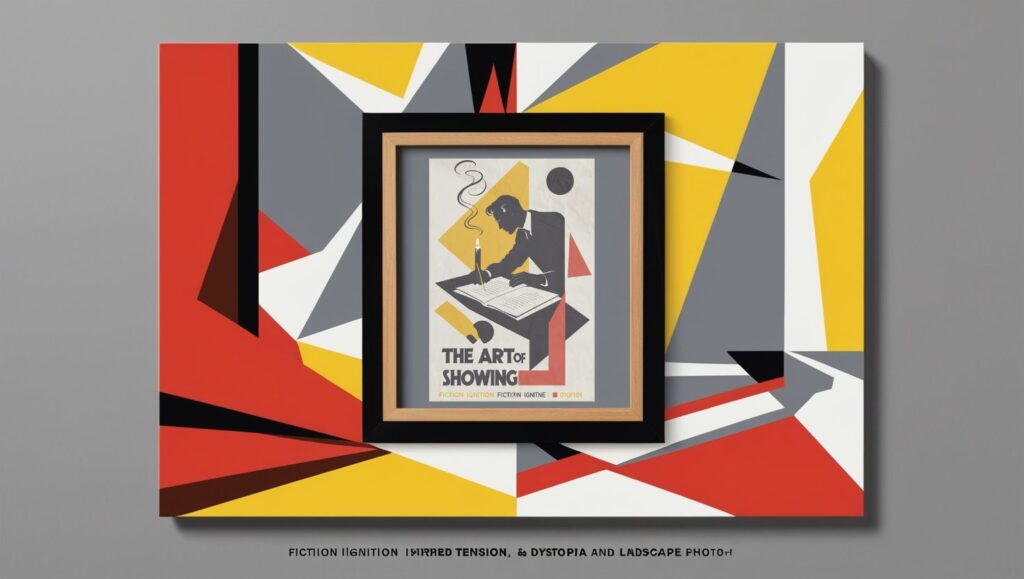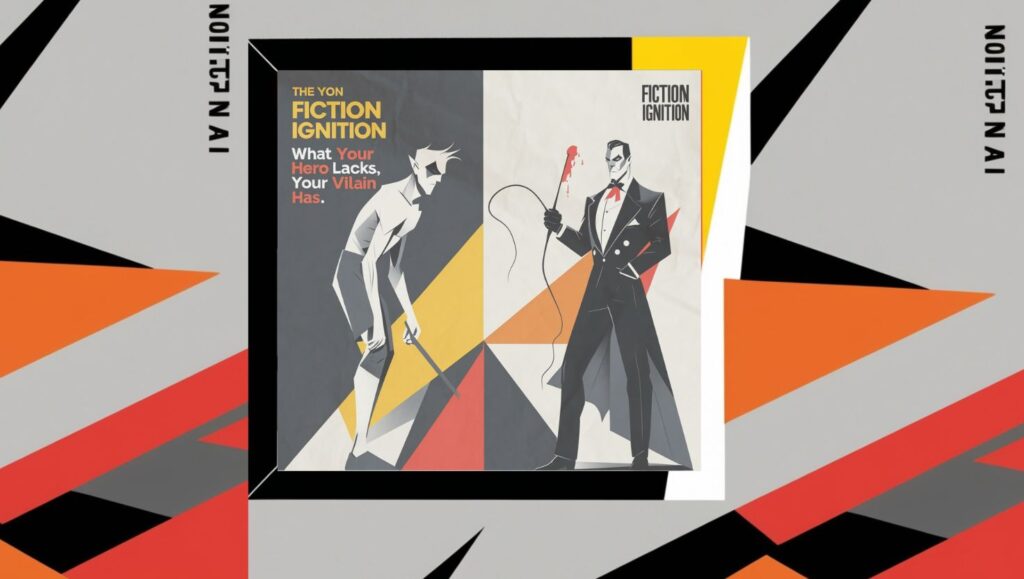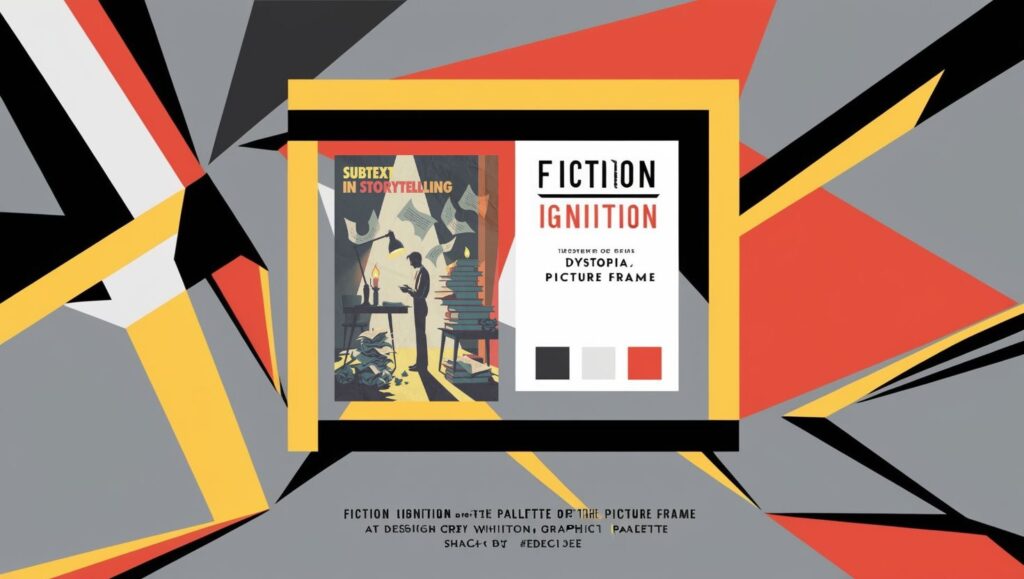Hello, Fiction Igniters!
Ah, the age-old advice: Show, don’t tell. You’ve probably heard it a bazillion times. It’s tossed around so often it almost feels like a cliché at this point. But you know what? It’s a cliché because it’s true. And mastering this one skill? It’s like moving from painting by numbers to creating a masterpiece that makes people stop, stare, and feel.
I learned this the hard way. Picture me, early in my writing journey, staring at a page that might as well have had “blah, blah, blah” written all over it. My character was “angry.” My setting was “scary.” And you know what? It wasn’t working. It was a snoozefest. Then, one magical day, I read The Old Man and the Sea by Ernest Hemingway. BOOM. My mind exploded. Hemingway didn’t tell me the sea was vast and isolating—he showed me the saltwater spray on the old man’s face, the rhythmic motion of the boat, the weight of the fish he struggled to reel in. That’s the power of showing. He didn’t just say, “The old man felt small in the ocean.” No, he made me feel small with every line.
So, why does this matter? Showing engages the reader’s senses. It puts them in the scene with the character, feeling what they’re feeling, seeing what they’re seeing. And isn’t that what we, as writers, really want? For our readers to feel something?
Let’s Break It Down: Showing vs. Telling
Alright, let’s get into it. Imagine you’re watching a movie where the lead character, let’s call him Joe, finds out he’s lost his job. Now, if you’re the director, you could have Joe walk up to his wife, stare at his shoes, and say, “I lost my job.” BOOM. It’s clear. But is it effective? Not so much. It’s flat, right?
Now, let’s show Joe’s emotions. Picture this: Joe stumbles through the door, his tie crooked, eyes glazed. He drops his keys on the table with a dull clink, sits down, and buries his face in his hands. His shoulders are slumped, and the silence in the room is deafening. His wife watches, helpless, as the weight of the moment settles in.
You see the difference? Showing gives you a visual, an emotional anchor that draws you in. You can almost feel Joe’s despair without him saying a word. That’s the magic!
Famous Writers Who’ve Mastered Showing
Now, let’s talk examples. No better place to start than with good ol’ Hemingway, who didn’t just understand showing, he became the embodiment of it. In The Sun Also Rises, he wrote:
“He looked at her. She looked at him. She smiled. He smiled back, though it was a weak smile.”
Simple, right? But we see it, don’t we? We can feel the tension between them. Every little action is charged with meaning. That’s showing. Hemingway’s genius was that he didn’t spell out the feelings—they emerged from the subtlety of his descriptions.
But let’s not forget J.K. Rowling, who’s brilliant at showing emotions without excessive explanation. Take Harry Potter and the Sorcerer’s Stone when Harry first sees Diagon Alley:
“Harry looked around and saw the most beautiful sight he had ever seen. The streets were full of wizards and witches in robes, laughing and chatting as they walked, and the shops were full of strange and magical things…”
We don’t need her to tell us Harry’s excited or overwhelmed. His sense of awe is in the description, in the crowded streets and the magical shops. She doesn’t tell us what Harry’s feeling; she lets us feel it with him.
My Personal Experience
Now, I’ll admit—I didn’t always get this. When I first started writing, I told everything. Characters’ emotions? Told. Setting descriptions? Told. You name it, I told it. And I thought, “Hey, this makes sense. I’m being clear!”
But after a few rounds of rejections (and a lot of frustration), I realized something. Telling was like reading a transcript of a conversation—it was dry and lacking energy. But when I switched gears to showing, my writing came alive. I remember one scene I wrote where a character is running through a dark forest at night. The original draft just said, “He was scared.”
And I thought, “Come on, Yoshi. That’s too easy.”
So I rewrote it: “His breath came in short, ragged bursts as the dark trees loomed above him. Every snap of a twig beneath his feet made his heart race, like a drumbeat counting down the moments until something horrible found him.”
Bam. You could feel the fear. You could hear the sound of his footsteps, and you could imagine the dark shadows creeping behind him. That’s what showing does. It hooks you in and makes you live the moment with the character.
Actionable Tips for You
Alright, Fiction Igniters, here’s your takeaway. How do you go from telling to showing?
- Use sensory details: What does the character see, smell, hear, taste, or touch? Don’t just tell me it’s cold—show me the chill creeping up their spine, or the sting of the wind on their cheeks.
- Body language speaks volumes: Does your character cross their arms? Tap their foot? Look down? These actions say so much more than “He was angry” or “She was nervous.” Let the body do the talking.
- Create action-driven scenes: Instead of just telling the reader what’s happening, let the action unfold. Show the chaos of a crowded street, the tension before a fight, or the solitude of a character lost in thought.
- Use dialogue wisely: Let your characters speak for themselves. A well-placed line of dialogue can reveal more about their state of mind than any amount of description.
Wrapping It Up
So, my fellow wordsmith warriors, the next time you write, ask yourself: “How can I show this instead of telling?” Dive deep into your character’s emotions, describe the setting in vivid detail, and let the scene unfold naturally. When you do, your writing will transform into something that lives and breathes in the minds of your readers.
And remember, until next time: don’t write, ignite!









